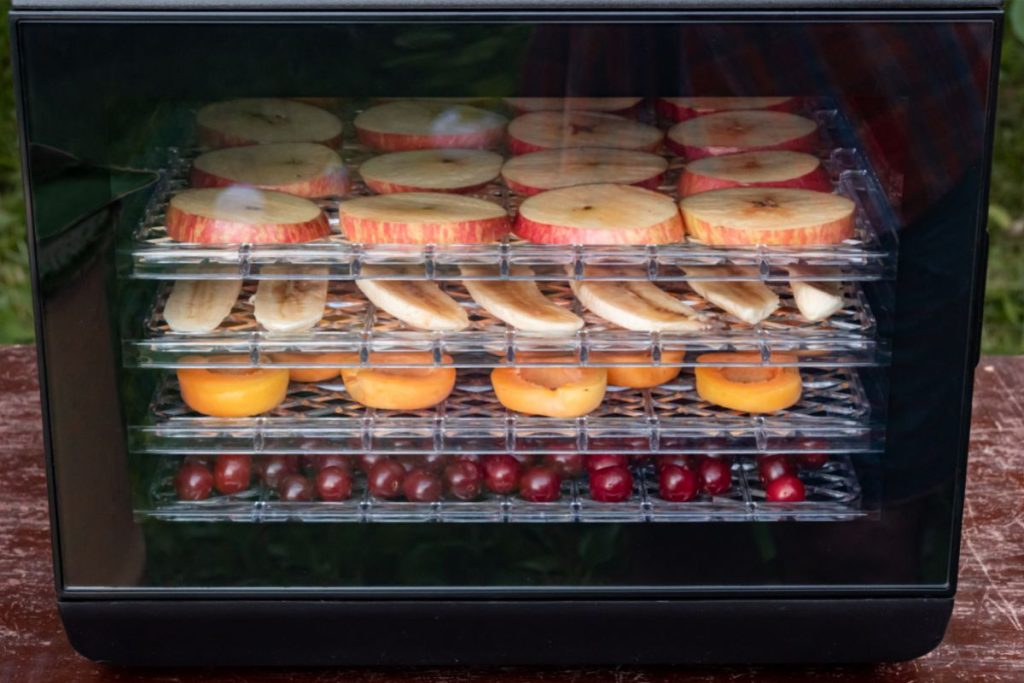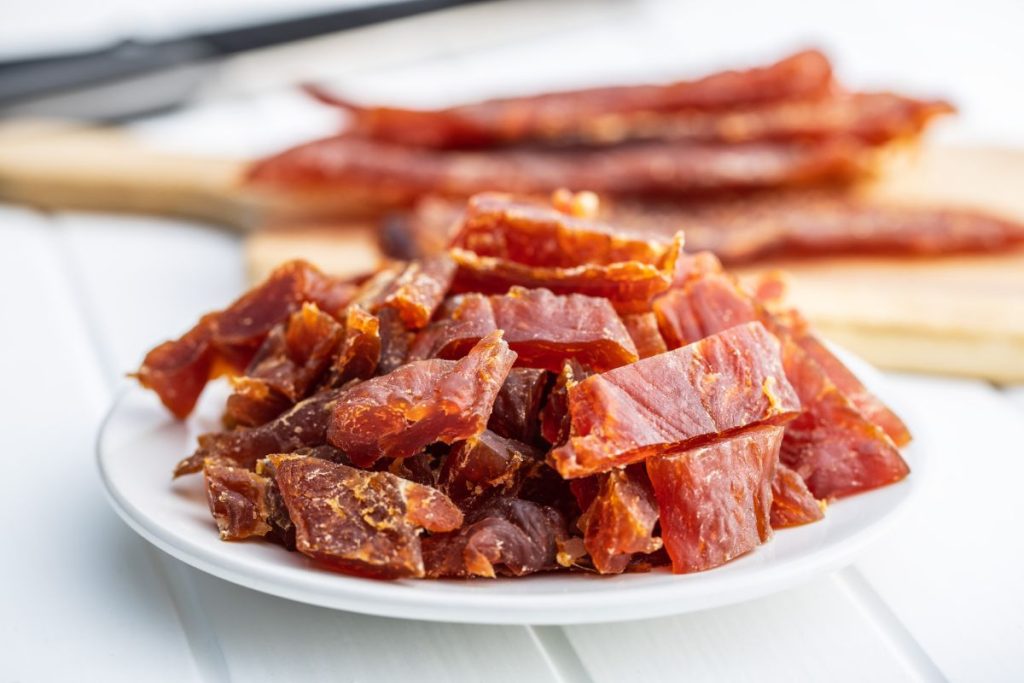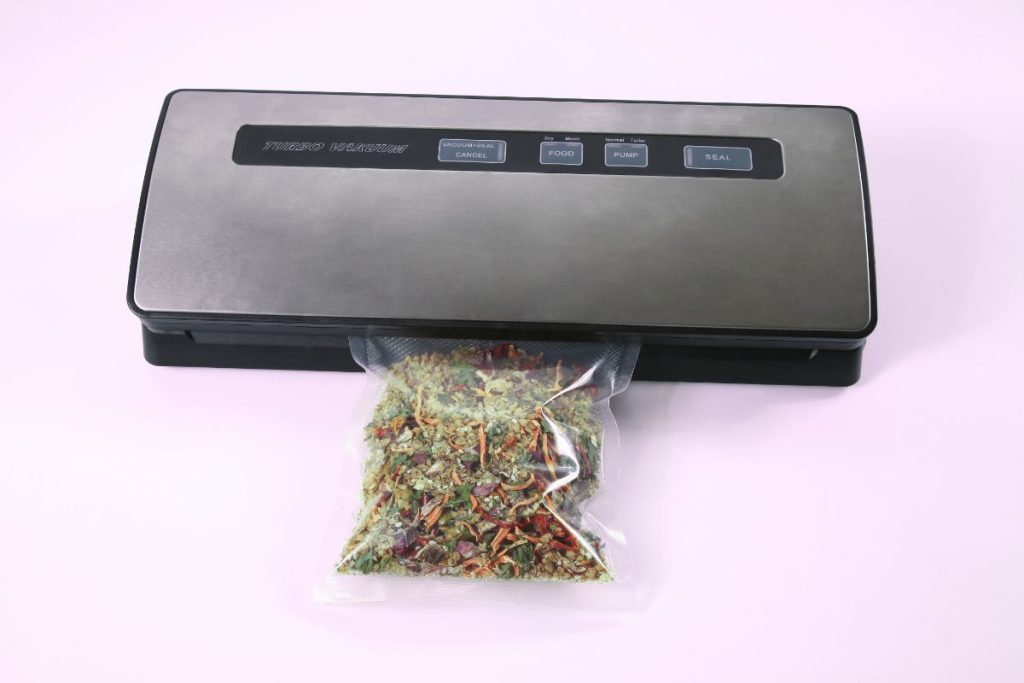You can dehydrate cooked food in a food dehydrator or in an oven. Simply place the freshly cooked food in thin, single layers on food dehydrator trays or parchment-lined baking sheets. Dehydrate it at 135°F-140°F for 6-10 hours until it develops a crunchy consistency or leathery appearance.
Table of Contents
What is the Best Way to Dehydrate Cooked Food?
The best way to dehydrate cooked food is to use a food dehydrator. Efficient food dehydrators such as those from Nesco and Excalibur allow for lower drying temperatures than other appliances.

How to Dehydrate Cooked Food Using a Dehydrator
Here’s how to dry food in a dehydrator:
- Add freshly cooked and cooled food on top of non-stick or silicone sheets made for food dehydrators in a thin layer. If dehydrating leftovers, reheat them first using boiling water to kill any bacteria that may be present.
- Blot the food with a paper towel to remove as much water content as possible.
- Place the sheets on top of the food dehydrator trays and insert them into the dehydrator.
- Set your food dehydrator temperature to 135°F-140°F and dehydrate the food for 6-10 hours. Always use less drying time for higher drying temperatures.
- Stir the food on the trays after the first four hours and every 30 minutes following to break food clumps as they dry.
- Once the food reaches a crumbly or crunchy consistency, remove the sheets and continue drying the food on the dehydrator trays. These trays have small holes on the bottom to promote airflow.
- If the food is not dry after the initial amount of time has passed, set a timer for 2 hours and check the food again.
- Remove the dried food from the dehydrator once it appears dry and let it cool to room temperature.
- It should be crumbly and have no moisture when you squeeze it. If it’s a sauce or paste, it should be leathery, like a fruit puree dehydrated to a chewy texture.
- Once you are satisfied that the food is completely dehydrated, place the food in labeled, airtight containers such as glass jars and condition it at room temperature for 1-2 days.
- If the dried food doesn’t cause any condensation to form in the food storage container, you can then store it in your pantry or in your freezer to extend its shelf life.
- Repeat the dehydration process for any food that still has visible moisture content.

Oven-Drying Cooked Food
You can dehydrate many types of food without a food dehydrator, using an oven.
- On parchment paper-lined baking sheets, add your freshly cooked food in a single, thin layer.
- Drain off any excess water and blot the top of the food with paper towels to reduce the amount of water present.
- Preheat the oven to the lowest temperature setting.
- Place the loaded baking sheet in the oven and allow it to dehydrate at 120°F-140°F for 4-6 hours.
- If your oven temperature is above this range, you will need to keep an eye on the food throughout the drying process to ensure it doesn’t burn.
- Stir the drying food thoroughly and break up any clumps that form to ensure even drying.
- Dehydrate until the food reaches a crumbly or leathery texture.
- Remove the dried food from the oven and allow it to cool to room temperature. Test for dryness by squeezing. The food should have no moisture.
- Divide the food and pack it into labeled, airtight containers, preferably in single servings.
- Condition the dried food for 1-2 days in a cool, dry place at room temperature in a see-through container such as a sealed plastic bag or glass jar. Repeat the dehydrating process for any food that produces condensation in the container.
What Cooked Foods Can be Dehydrated?
Most cooked foods can be dehydrated, but dehydrated meals should be low in fat. Avoid adding oil or butter to meals you will dehydrate later. Stick to lean protein because fat causes food to go rancid quickly.
Cooked foods that can be dehydrated include fruit jam, fruit leather, tomato sauce, quinoa, legumes, pasta, veggie casseroles, and stews. Lean meats such as ground beef, beef jerky, chicken, fish, and turkey.are also suitable for dehydration.

What are the Benefits of Dehydrating Food?
Dehydrating cooked meals has many benefits, including:
- Build emergency food storage
- Easy to rehydrate in hot water without additional cooking required
- Extends the shelf-life of your favorite meals
- Helps to avoid food waste by preventing spoilage
- Make lightweight, portable backpacking meals
- Reduce trips to the grocery store with meals at home
- Save money by buying in bulk and storing for later
What is the Shelf Life of Dehydrated Cooked Food?
The shelf life of dehydrated cooked food varies but can last up to two years if stored in the freezer in an airtight container. Using a vacuum sealer and Mylar bags will maximize the shelf life of dehydrated meals.

How Long Does Dehydrated Cooked Meat Last?
Dehydrated meat lasts up to 14 days at room temperature in a cool, dry, and dark place. If stored in a refrigerator or freezer, it can last up to six months.
Best Way to Store Dehydrated Cooked Food
The best way to store dehydrated cooked food is to keep it in airtight containers or vacuum-sealed bags with an oxygen absorber. This method keeps the nutritional value of the food intact and prevents oxidation. Food stored in this way should be used within 6 months to a year for the best quality.

